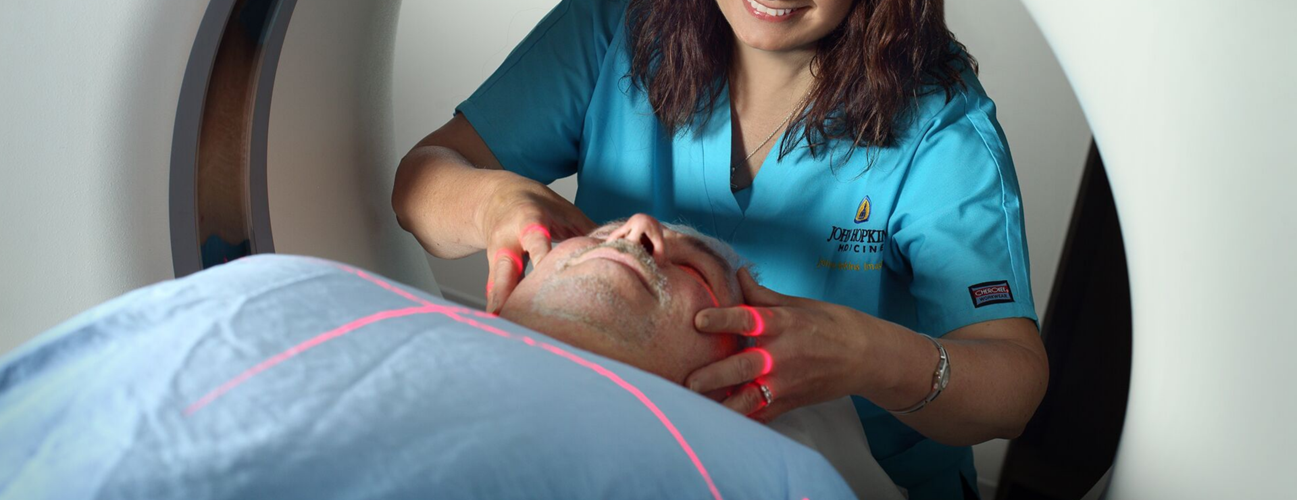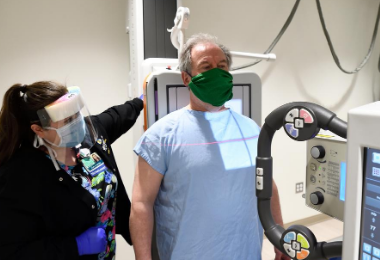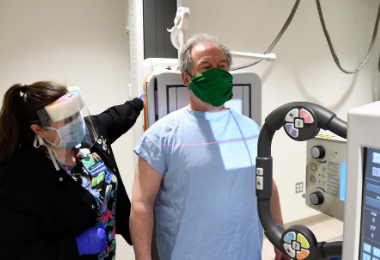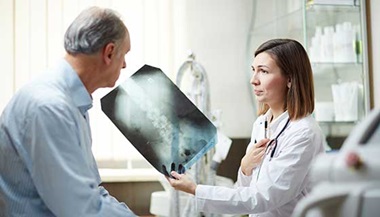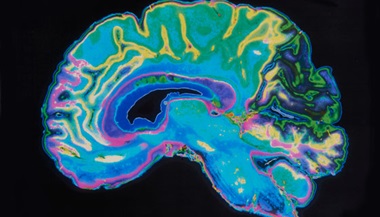Computed Tomography (CT) Scan
What You Need to Know
- A CT scan is a diagnostic imaging exam that uses X-ray technology to produce images of the inside of the body.
- A CT scan can show detailed images of any part of the body, including the bones, muscles, organs and blood vessels.
- CT scans can also be used for fluid or tissue biopsies, or as part of preparation for surgery or treatment.
- CT scans are frequently done with and without contrast agent to improve the radiologist’s ability to find any abnormalities.
What is a CT scan?
Computed tomography is commonly referred to as a CT scan. A CT scan is a diagnostic imaging procedure that uses a combination of X-rays and computer technology to produce images of the inside of the body. It shows detailed images of any part of the body, including the bones, muscles, fat, organs and blood vessels.
CT scans are more detailed than standard X-rays. In standard X-rays, a beam of energy is aimed at the body part being studied. A plate behind the body part captures the variations of the energy beam after it passes through skin, bone, muscle and other tissue. While much information can be obtained from a regular X-ray, a lot of detail about internal organs and other structures is not available.
In CT, the X-ray beam moves in a circle around the body. This allows many different views of the same organ or structure and provides much greater detail. The X-ray information is sent to a computer that interprets the X-ray data and displays it in two-dimensional form on a monitor. Newer technology and computer software makes three-dimensional images possible.
CT scans may be performed to help diagnose tumors, investigate internal bleeding, or check for other internal injuries or damage. CT can also be used for a tissue or fluid biopsy.
Why are CT scans sometimes ordered with contrast?
CT scans may be done with or without contrast. Contrast refers to a substance taken by mouth or injected into an IV line that causes the particular organ or tissue under study to be seen more clearly. Contrast examinations may require you to fast for a certain period of time before the procedure. Your doctor will notify you of this prior to the procedure.
You will need to let your doctor know if you have ever had a reaction to any contrast media and/or any kidney problems. A reported seafood allergy is not considered to be a contraindication for iodinated contrast. If you have any medical conditions or recent illnesses, inform your doctor.
Find an Imaging Location

How do I prepare for a CT scan?
If you are having a computed tomography angiography (CTA) or a virtual colonoscopy, you will be given specific instructions when you make your appointment.
PRECAUTIONS: If you are pregnant or think you may be pregnant, please check with your doctor before scheduling the exam.
CLOTHING: You may be asked to change into a patient gown. If so, a gown will be provided for you. Please remove all piercings and leave all jewelry and valuables at home.
CONTRAST MEDIA: Contrast may be indicated for your exam. The contrast media improves the radiologist’s ability to find structures that are abnormal and understand normal anatomy better.
- Some patients should not have an iodine-based contrast media. If you have problems with your kidney function, please inform your radiologist in advance. We may be able to perform the scan without the contrast media or find an alternate imaging exam.
- The most common type of CT scan with contrast is the double-contrast study, which will require you to drink a contrast media before your exam begins in addition to the IV contrast. The more contrast you are able to drink, the better the images are for the radiologist to visualize your digestive tract.
ALLERGY: Please inform the access center representative when you schedule your scan if you have had an allergic reaction to any contrast media. IV contrast will not be administered if you have had a severe or anaphylactic reaction to any contrast media in the past. Mild to moderate reactions warrant a plan that includes taking medication prior to the CT examination. These plans will be discussed with you in detail when you schedule your exam. Any known reactions to a contrast media should be discussed with your personal physician.
EAT/DRINK: If your study was ordered without contrast, you can eat, drink and take your prescribed medications prior to your exam.
If your doctor orders a CT scan with contrast, do not eat anything three hours prior to your CT scan. We encourage you to drink clear liquids. You may also take your prescribed medications prior to your exam.
DIABETICS: People with diabetes should eat a light breakfast or lunch three hours prior to the scan time. Depending on your oral medication for diabetes, you may be asked to discontinue use of the medication for 48 hours after the CT examination. Detailed instructions will be given following your examination.
MEDICATION: All patients can take their prescribed medications as usual.
What are the risks of a CT scan?
If you are pregnant or think you may be pregnant, you should notify your health care provider.
The amount of radiation dose used in a CT scan is small. You may want to ask your doctor about the amount of radiation used during the CT procedure and the risks related to your particular situation.
If you are claustrophobic or tend to become anxious easily, tell your doctor ahead of time. You may be prescribed a mild sedative to take before the procedure to make you more comfortable.
What happens during a CT scan?
CT scans may be performed on an outpatient basis or as part of your stay in a hospital. Procedures may vary depending on your condition and your physician’s practices. Generally, CT scans follow this process:
- You may be asked to change into a patient gown. If so, a gown will be provided for you. A locker will be provided to secure all personal belongings. Please remove all piercings and leave all jewelry and valuables at home.
- If you are to have a procedure done with contrast, an IV line will be started in the hand or arm for injection of the contrast media. For oral contrast, you will be given a liquid contrast preparation to swallow. In some situations, the contrast may be given rectally.
- You will lie on a scan table that slides into a large, circular opening of the scanning machine.
- The technologist will be in another room where the scanner controls are located. However, you will be in constant sight of the technologist through a window. Speakers inside the scanner will enable the technologist to communicate with and hear you. You may have a call button so that you can let the technologist know if you have any problems during the procedure. The technologist will be watching you at all times and will be in constant communication.
- As the scanner begins to rotate around you, X-rays will pass through the body for short amounts of time. You will hear clicking sounds, which are normal.
- The X-rays absorbed by the body’s tissues will be detected by the scanner and transmitted to the computer. The computer will transform the information into an image to be interpreted by the radiologist.
- It is important that you remain very still during the procedure. You may be asked to hold your breath at various times during the procedure.
- If contrast media is used for your procedure, you may feel some effects when the contrast is injected into the IV line. These effects include a flushing sensation, a salty or metallic taste in the mouth, a brief headache, or nausea and/or vomiting. These effects usually last for a few moments.
- You should notify the technologist if you have any breathing difficulties, sweating, numbness or heart palpitations.
- When the procedure has been completed, you will be removed from the scanner.
- If an IV line was inserted for contrast administration, the line will be removed.
- While the CT procedure itself causes no pain, having to lie still for the length of the procedure might cause some discomfort or pain, particularly in the case of a recent injury or invasive procedure, such as surgery. The technologist will use all possible comfort measures and complete the procedure as quickly as possible to minimize any discomfort or pain.
What happens after a CT scan?
- If contrast media was used during your procedure, you may be monitored for a period of time for any side effects or reactions to the contrast, such as itching, swelling, rash or difficulty breathing.
- If you notice any pain, redness and/or swelling at the IV site after you return home following your procedure, you should notify your doctor, as this could indicate an infection or other type of reaction.
- There is typically no special type of care required after a CT scan. You may resume your usual diet and activities unless your doctor advises you differently.
- Your doctor may give you additional or alternate instructions after the procedure, depending on your particular situation.
What are some of the advances in CT technology?
Advances in CT technology include:
- High-resolution CT: This type of CT scan uses very thin slices (less than 0.1 inches), which are effective in providing greater detail in certain conditions, such as lung disease.
- Helical or spiral CT: During this type of CT scan, both the patient and the X-ray beam move continuously, with the X-ray beam circling the patient. The images are obtained much more quickly than with standard CT scans. The resulting images have greater resolution and contrast, providing more detailed information. Multidetector-row helical CT scanners may be used to obtain information about calcium buildup inside the coronary arteries of the heart.
- Ultrafast CT (also called electron beam CT): This type of CT scan produces images very rapidly, thus creating a type of "movie" of moving parts of the body, such as the chambers and valves of the heart. This scan may also be used to obtain information about calcium buildup inside the coronary arteries of the heart, but the helical scanners are much more common.
- Computed tomographic angiography (CTA): Angiography (or arteriography) is an X-ray image of the blood vessels. A CT angiogram uses CT technology rather than standard X-rays or fluoroscopy to obtain images of blood vessels — for example, the coronary arteries of the heart.
- Combined positron emission tomography and CT (PET/CT): The combination of CT and positron emission tomography technologies into a single machine is referred to as PET/CT. PET/CT combines the ability of CT to provide detailed anatomy with that of PET to show cell function and metabolism in order to offer greater accuracy in the diagnosis and treatment of certain types of diseases, particularly cancer. PET/CT may also be used to evaluate conditions such as epilepsy, Alzheimer’s disease and coronary artery disease.

